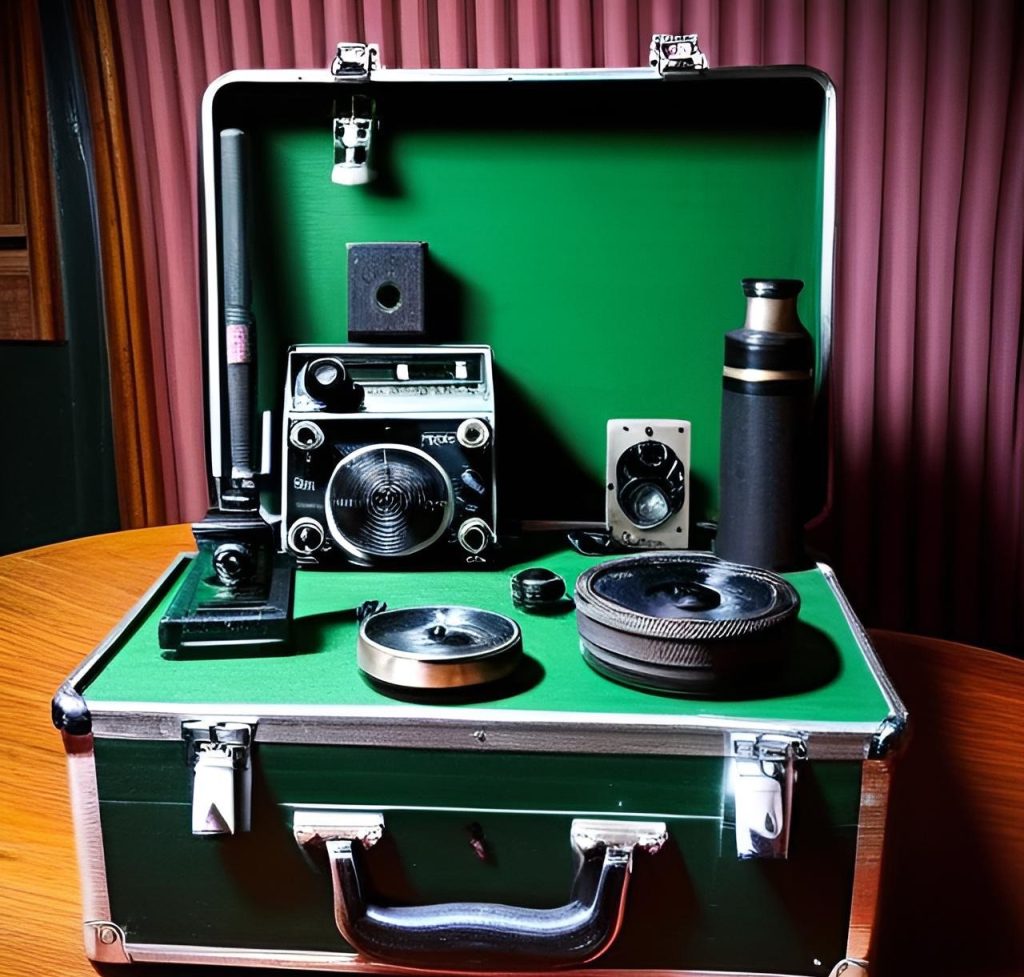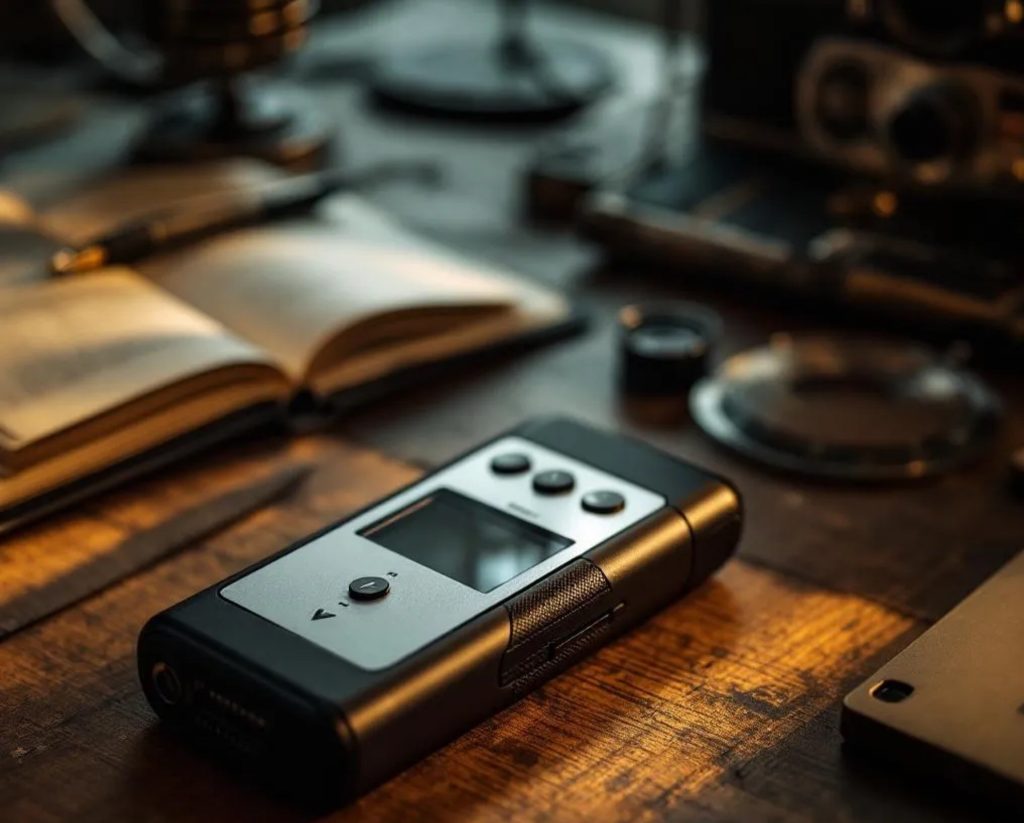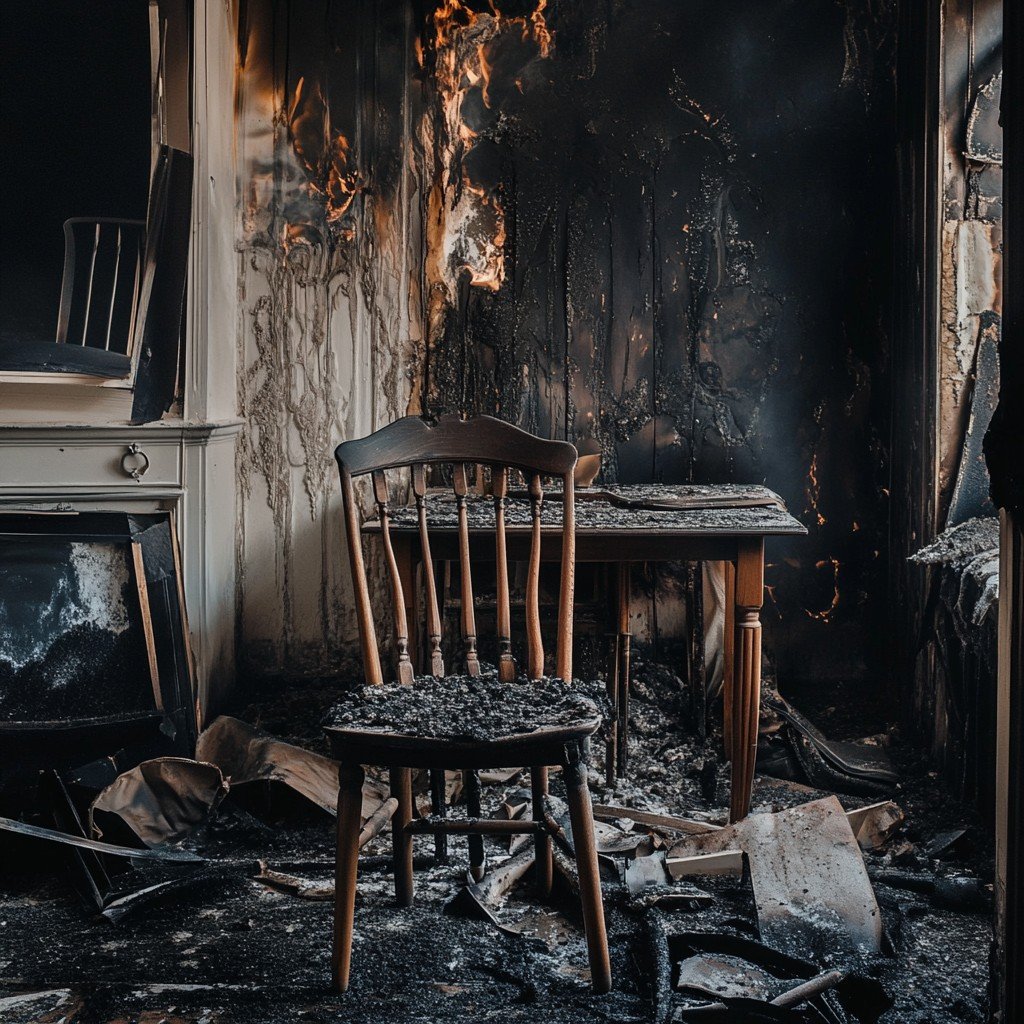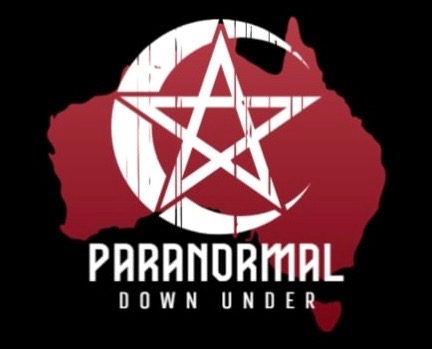
How to Start as a Paranormal Investigator (Step-by-Step Beginner’s Guide)
So you’ve finally done it, you’ve gathered your first set of ghost hunting gear, from your EMF detector and EVP recorder to a trusty flashlight and maybe even a night vision camera. You’ve watched investigators on YouTube, followed paranormal groups online and can’t wait to get out there and experience the thrill yourself.
But where do you begin once your equipment is ready?
Becoming a successful paranormal investigator takes more than curiosity, it takes patience, practice and a deep understanding of both your tools and your environment. Before you head into private homes or infamous haunted locations, it’s crucial to spend time learning your gear, testing techniques and understanding the natural world around you.
This guide will walk you through exactly how to start as a paranormal investigator, safely, respectfully and effectively.
1. Learn Your Equipment Before You Hunt
Every tool you bring into an investigation serves a purpose, and knowing exactly how it works can mean the difference between capturing real evidence and misinterpreting natural phenomena.

EMF Detectors
An EMF detector measures electromagnetic fields, which some believe spirits can manipulate to commuicate. But before assuming every spike is paranormal, test your detector near electrical wiring, phones or appliances to see what normal interference looks like. Learn its behaviour so you can recognise genuine anomalies.
EVP Recorders
Your digital recorder is one of your most important tools for capturing Electronic Voice Phenomena (EVPs), possible spirit voices. Practice using your recorder in quiet spaces to understand how different background noises sound during playback. The more you know what’s normal, the easier it’ll be to identify the unexplainable.
Spirit Boxes
A spirit box rapidly scans radio frequencies, creating white noise and short bursts of sound that spirits may manipulate to form words. Before assuming communication, listen to your device in various areas so you understand what random radio chatter sounds like versus intelligent responses.
Infrared or Full-Spectrum Cameras
Cameras can capture light spectrums unseen by the human eye. Take practice photos and videos in dim or low-light environments to study how dust, moisture and insects appear on camera. This helps you avoid misidentifying natural elemtns as orbs or light anomalies.
2. Practice Makes Perfect – Start in Public Graveyards

Once you’re comfortable with your gear, it’s time to test it in a real environment. Public cemeteries and historical graveyards are the perfect training grounds for beginner investigators.
Here’s why:
- Accessibility: Public graveyards are often open or allow access with permission, making them ideal for beginners.
- Rich History: Cemeteries hold countless stories, dates and names that make for intriguing investigations.
- Low Pressure: You’re not investigating for a client, so you an focus on learning, not performing.
When visiting a cemetery for paranormal practice:
- Always research the site first and ensure it’s legally accessible.
- Be respectful, avoid wakling directly over graves or disturbing markers.
- Take time to observe the environment, notice natural noises, light sources and temperature changes.
- Use the opportunity to memorize your equipment setup. Practice setting up your recorder, callibrating your EMF and scanning with your camera.
The goal isn’t to capture something paranormal right away, it’s to learn how your equipment behaves in the real world, so when something truly unusual happens, you’ll recognise it immediately.
3. Learn the Art of Debunking Early
A great paranormal investigator is also a great skeptic. It might sound strange, but skepticism protects credibility. Before declarring anything “paranormal”, work through all possible natural explanations.
Here’s an idea of some things to look for:
- Electrical Interference: Wires, routers and power sources can trigger EMF spikes.
- Environmental Noises: Wind, animals and even far-off cars can cause strange sounds.
- Light anomalies: Dust, bugs and reflections can look like glowing orbs or figures.
By debunking first, you build integrity, and when you do capture something you can’t explain, your evidence will carry far more weight.
4. Focus on Documentation
Every experienced investigator knows the importance of good documentation. During every Investigation, take note of:
- Time and date
- Weather and temperature
- EMF readings
- Personal feelings or sensations
- Equipment activity
Afterwards, review your recordings carefully. True evidence often hides in the details, an EVP you didn’t hear in the moment, a flicker on camera or a temperature change captured by your meter.
This documentation process helps you refine your skills, track patterns and build your own investigation style over time.
5. Build Experience Before Private Investigations
Before you move on to private residences or famous haunted locations, spend time investigating open or public spaces. You’ll develop confidence in your methods and learn how to handle different settings, urban, rural, rural and outdoor.
Eventually, consider joining or collaborating with an established paranormal investigation group. Many teams host open investigations or training nights where newcomers can learn proper techniques, safety protocols and ethical investigation standards.
Learning from seasoned investigators will help you:
- Understand how to approach clients respectfully
- Handle evidence review as a team
- Use advanced equipment safely and effectively
- Maintain professionalism in sensitive or emotional environments
6. Respect is Key
Respect is one of the most important traits of any paranormal investigator. Whether you’re in a graveyard, an abandoned building or someones home, always act respectfully toward the environment and the potential spirits you’re attempting to communicate with.
Avoid provoking, shouting or demanding responses. It’s not about confrontation, it’s about communication.
Remember: every investigation is a mix of science, intuition and empathy.
Final Thoughts: Your Paranormal Journey Begins Here
Starting as a paranormal investigator isn’t about catching the biggest ghost story, it’s about learning, observing and understanding the unknown.
By mastering your equipment, practicing in respectful and accessible locations like public graveyards and developing a balance of curiosity and skepticism, you’ll lay the foundation for a meaningful and credible paranormal investigation career.
So now that you have your first set of ghost hunting gear, get out there, stay safe, take your time and let your curiosity lead the way. The more you learn, the more the paranormal world opens up to you.

EVP Recorders: Capturing Voices from Beyond & Proven Techniques for Paranormal Investigations
In the world of ghost hunting and paranormal research, few tools are as intriguing, or as essential, as the EVP recorder. Believed to capture disembodied voices or mysterious sounds from beyond the veil, EVP (Electronic Voice Phenomena) recordings have become one of the most compelling forms of evidence in the field of paranormal investigation.
Whether you’re a seasoned investigator or a beginner curious about the unseen, understanding how EVP recorders work, and how to use them effectively, can make all the difference in uncovering authentic, unexplained voices.
In this guide, we’ll explore what EVP recorders are, how they’re used and several professional investigation techniques that can help you capture credible evidence of spirit communication.
What is an EVP Recorder?
An EVP recorder is typically a digital audio device used to capture sound frequencies beyond what the human ear can detect. While ordinary recorders can sometimes pick up unexplained voices, investigators often use high-sensitivity digital recorders designed to capture even the faintest disturbances in the environment.
EVP recorders are often preferred over the smartphone microphone because they:
- Capture a wider frequency range.
- Produce cleaner audio with less compression.
- Allow for longer recording sessions and better file management.
- Can be paired with professional analysis software.
Some modern paranormal investigators also use multi-channel recorders or synchronised setups to compare results and rule out false positives.

How Do EVP Recorders Work?
The theory behind EVP is that spirits or residual energy can manipulate ambient sound frequencies or electromagnetic energy to produce speech-like patterns. These sounds are often inaudible during the session but become clear upon playback.
There are three general types of EVP classifications:
- Class A: Clear and easily understandable without enhancement.
- Class B: Audible and partially understandable, but may require light filtering.
- Class C: Faint, unclear and open to interpretation.
Most genuine EVPs fall into the Class B category, making careful review and analysis crucial for credibility.
Why EVP Recorders Are Vital in Paranormal Investigations
EVP recorders bridge the gap between the physical and spiritual worlds. While other tools, like EMF detectors or motions sensors, can indicate activity, EVP offers something far more compelling: potential communication.
Investigators use EVP recorders to:
- Capture spirit voices or whispers that respond to questions.
- Gather contextual evidence linked to specific events or objects.
- Document unexplained phenomena occurring simultaneously with other readings (such as EMF spikes or temperature drops).
EVP sessions often serve as the core evidence of an investigation, providing moments where the unseen makes its presence known through sound.
Proven Techniques for Capturing EVP
There’s both art and science involved in conducting EVP sessions. Success often depends on your patience, environment and approach. Below are some of the most reliable EVP techniques used by investigators worlwide:
1. Direct Question and Answer Sessions
This is the foundation of EVP work. Investigators ask clear, direct questions and leave gaps of 10-15 seconds between each to allow potential responses. Keep questions simple, respectful and open-minded.
Example Questions:
- “Is anyone here with us tonight?”
- “Can you tell us your name?”
- “Do you know what year it is?”
- “Why are you here?”
It’s important to maintain a calm and inviting tone, spirit communication is often said to be influenced by energy and intent.
2. Controlled Silence Sessions
Not all EVP captures come from direct questioning. Some of the most startling voices appear during moments of silence, when investigators aren’t speaking at all.
In this technique, you allow the recorder to run in a quiet room for several minutes. No questions, no movement, just ambient recording. These “passive captures” are considered [pwerful because they occur naturally, without investigator input.
3. Trigger Object Sessions
A trigger object is an item believed to provoke interaction or recognition from a spirit. This can include toys, old coins, jewelry, tools, photographs or anything linked to the history of the location or the spirit.
You can set a recorder near the trigger object and ask relevant questions:
- “Did this belong to you?”
- “Can you move this for us?”
- “Does this object mean something to you?”
By giving spirits something familiar or emotionally charged, you increase the likelihood of a response.
4. EVP Burst Sessions
An EVP burst session is one of the most effective modern techniques in ghost hunting. Instead of recording for hours and sifting through endless audio later, investigators conduct short, focused recording sessions. Usually 2 to 5 minutes long (Although i often only do 30 to 60 seconds), followed by immediate playback.
During playback, the team listens for responses in real time. If something is captured, investigators can then ask follow-up questions based on the potential response, adjusting their line of inquiry instantly.
Benefits of Burst Sessions:
- Faste feedback and more dynamic interaction.
- Better control over environmental changes (like footsteps or background noise).
- Easier to isolate and tage responses.
This technique not only saves review time but also enhances the sense of real-time communication during an investigation.
5. Tagging Sounds for Accuracy
Environmental sounds, like footsteps, whispers or coughing, can easily be mistaken for EVPs during review if not properly documented. Professional investigators use a method known as tagging to verbally note any noises they make during a sessiosn.
For Example:
- “That was me moving the chair.”
- “That sound was from the hallway.”
- “(name) just coughed.”
Tagging helps you eliminate false positives later and keeps your evidence credible when sharing with others.
6. Multiple Recorder Placement
To verify the authenticity of a sound, many investigators place two or more recorders in different areas of the investigation site. If a voice is captured on only one recorder, it may indicate a localized anomaly rather than a sound coming from a human source or external interference.
This technique also helps rule out echoes, contamination and overlapping dialogue between team members.
7. Time-Staggered Recording Sessions
Paranormal activity can fluctuate depending on the time of night or the energy in the environment. Conducting EVP sessions at different intervals, early evening, midnight, pre-dawn, can help identify activity patterns and determine when communication is strongest.
Some investigators report increased results during what’s known as the “Witching Hour” (3:00 a.m.), when spiritual energy is believed to be most active.
Reviewing and Analyzing EVP Recordings
After a session, the real work begins. Proper analysis ensures your findings remain credible and professional.
Tips for Reviewing EVP Recordings:
- Use high-quality headphones to catch subtle whispers or low-frequency sounds.
- Listen in a quiet room and play sections multiple times before labeling them as EVP.
- Cross-check timestamps across multiple recorders and cameras.
- Avoid over-editing or applying heavy filters, keep the raw audio intact for authenticity.
- Keep a detailed logbook noting time, location, questions asked and responses heard.
Remember: credible evidence speaks for itself. Over-interpretation or enhancement can weaken your findings.
Professional Tips for EVP Success
- Stay Respectful: Treat every investigation as if you are entering someone’s space.
- Keep Sessions Short and Focused: Spirits may respond better to short bursts of attention rather than long, drawn-out recordings.
- Minimize Contamination: Keep teams small to avoid whispering during active recording.
- Document Everything: Combine your audio evidence with notes, video and environmental readings.
Final Thoughts
EVP recorders are more than just gadgets, they are the voice of the unknown, offering a rare chance to connect with energies and entities that exist beyond our understanding.
By using professional techniques like EVP burst sessions, tagging and trigger objects, investigators can capture more compelling, credible evidence while maintaining scientific discipline and respect for the unseen.
Whether you’re a beginner exploring your first haunted location or a veteran ivnestigator chasing that elusive Class A EVP, remember: patience, precision and respect are your greatest tools.
So the time you hit “record”, you might just hear something… unexpected.

Residual Haunting vs. Intelligent Haunting: Understanding the Difference Between the Two
In the world of paranormal investigation, few topics spark as much curiosity as the distinction between residual hauntings and intelligent hauntings. Whether you’re a seasoned ghost hunter or someone fascinated by the unknown, understanding how these two types of hauntings differ can completely change how you interpret an investigation.
While both involve unexplained phenomena – sounds, voices, apparitions, cold spots or movements – the key difference lies in awareness. A residual haunting acts like a replay of the past, while an intelligent haunting involves a conscious spirit who may be attempting to communicate. Knowing which one you’re dealing with is essential for accurate investigation and understanding the nature of the paranormal world.
What is a Residual Haunting?
A residual haunting is often described as a playback of energy, an imprint left behind from a powerful moment in time. It’s not a conscious spirit, but rather an energetic recording of an event that continues to replay long after the people involved are gone.
These hauntings are typically tied to emotional or traumatic experiences. The stronger the energy during the event – grief, fear, anger or even joy – the more likely it is to have left a mark on the environment. Many investigators believe that the surrounding materials, such as stone or wood, can absorb and store this energy, releasing it under certain conditions like humidity, temperature or time of day.
Common Signs of a Residual Haunting
- Repetitive Activity: The same sequence repeats. Footsteps at the same hour, door closing or an apparition walking the same path.
- Lack of Awareness: The entity doesn’t notice or interact with the living. It’s like a scene from history on an endless loop.
- Predictable Timing: Activity may occur at specific times or dates related to the original event.
- No Direct Communication: Attempts to speak or engage with the spirit are followed with no responses.
A classic example might be a soldier eternally marching down an old hallway, or the faint sound of a woman crying in an empty room where tragedy once struck. These hauntings feel more like time bleeding through the cracks rather than a spirit reaching out.
What is an Intelligent Haunting?
An intelligent haunting, sometimes called a conscious haunting, is when a spirit appears aware of its surroundings and interacts with the living. These are the experiences that often leave investigators questioning what lies beyond death, as they suggest the survival of consciousness.
Common Signs of an Intelligent Haunting:
- Direct Response: Spirits react to questions or commands during EVP sessions, spirit box sessions or dowing rod communication.
- Environmental Interaction: Objects move, lights flicker or equipment responds intelligently to questions.
- Emotional Awareness: Some spirits display recognizable personalities, emotions or intentions. Be it playful, protective or at times, unsettling.
- Unpredictable Activity: Unlike residual energy, intelligent spirits act with purpose. Often in ways that seem designed to get your attention.
An example might be hearing a voice reply when you ask “Is anyone with me?” or having your EMF detector light up in direct response to a request. These hauntings often feel deeply personal, as though something unseen is aware of you, observing quietly from just beyond perception.
How Paranormal Investigators Tell the Difference
For investigators, understanding the type of haunting they’re dealing with is vital. It shapes how an investigation is conducted, how data is interpreted and even how the team interacts with the environment.
- Observation and Repetition: If the activity happens at the same time every night or follows a predictable pattern, it’s likely residual. Intelligent hauntings are much more dynamic, with varied responses that often depend on investigator interaction.
- Communication Attempts: Residual energy doesn’t communicate. If you ask a question and recieve a direct EVP or spirit box response, that’s a strong indicator of intelligence behind the activity.
- Environmental Correlation: Residual hauntings oftn occur in historically significant places – battlefields, old homes or areas marked by intense emotion. Intelligent hauntings can happen anywhere, but they’re more focused on individuals, unfinished business or emotional ties.
- Equipment Analysis: Paranormal tools such as EMF detectors, EVP recorders and REM pods help distinguish the two. Unchanging energy readings often point to residual energy, while spikes that coincide with questions or movement indicate intelligence.
Why Understanding the Difference Matters
Distinguishing between residual and intelligent hauntings is more than a matter of terminology, it’s about understanding the nature of what you’re experiencing.
- Residual Hauntings: Offer a glimpse into the past. They tell stories of what once happened in a place, revealing emotional energy preserved in time.
- Intelligent Hauntings: Suggest an active consciousness, a spirit trying to reach out, communicate or even seek closure.
For paranormal investigators, knowing this difference can mean the success or failure of an investigation. It also brings a sense of respect, recognising when you’re witnessing history versus when you’re in the presense of something truly aware.
Theories Behind the Phenomena
While science has yet to explain these hauntings concluseively, several theories attempt to make sense of them.
- The Stone Tape Theory: Suggests that emotional or traumatic events imprint themselves into building materials or natural elements, later replaying under specific conditions.
- Conscious Energy Theory: posits that a persons consciousness or energy can persist after death, continuing to interact with the living world.
- Psychological Resonance: Some believe these hauntings are manifestations of collective human emotion or memory, blending energy from the past with the perception of the present.
These theories remain speculative but help bridge the gap between what is experienced and what may one day be scientifically understood.
Final Thoughts
Whether it’s a residual haunting, endlessly replaying echoes of the past or an intelligent haunting, where something aware watches and listens, both forms of activity reminds us how thing the boundary between worlds might truly be.
Every whisper in the dark, every unexplained shadow and every voice captured on an EVP recorder could hold a story. Some written long ago, others still unfolding.
For investigators and enthusiasts alike, understanding these distinctions deosn’t just make for better research; it deepends the connnection between the living and the unseen.
